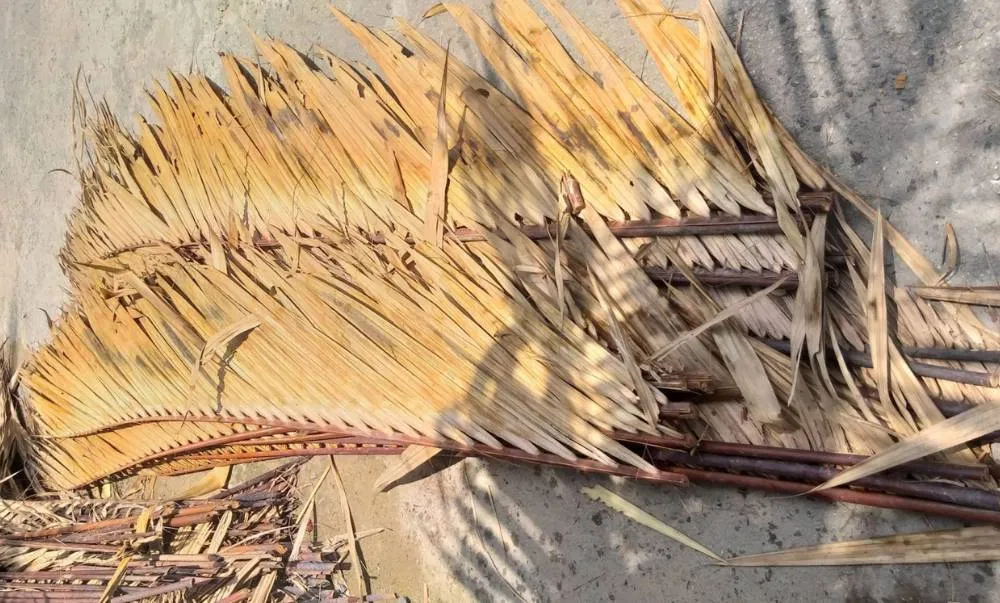Coconut leaves, a familiar symbol of the tropics, offer more than just shade and sweet coconuts. They are also a precious resource in Vietnamese culture and economy. For generations, dried coconut leaves have been used to create countless useful items, including the coconut leaf fan, an indispensable tool in daily life, especially in rural areas. Today, the art of coconut leaf fan making is not only preserved but also promoted through traditional handicraft classes, attracting many participants. So, how can you experience and learn this unique art form?
Discovering the Art of Traditional Coconut Leaf Fan Making
Coconut leaf fan making is a long-standing cultural beauty of Vietnam, particularly prevalent in the Mekong Delta provinces, where lush coconut groves stretch endlessly. A coconut leaf fan is more than just a cooling device; it’s a work of art, reflecting the dexterity, meticulousness, and creativity of the artisan.
Traditional coconut leaf fans are typically made from carefully selected dried coconut fronds, ensuring durability and aesthetics. The fan-making process requires patience and skill, from splitting the leaves, shaping the ribs, weaving the fan, to decorating patterns. Each fan is a unique handmade product, imbued with the personal touch of the craftsman.

Why Join Coconut Leaf Fan Making Classes?
Participating in coconut leaf fan making classes is not just a fun recreational activity but also offers many practical benefits:
- Learn about traditional culture: You will discover the history, meaning, and cultural value of coconut leaf fan making, contributing to the preservation and promotion of national identity.
- Develop dexterity and meticulousness: The fan-making process demands high concentration and skillful hands, helping you cultivate patience and meticulousness in your work.
- Creativity and self-expression: You can freely create unique fan designs, decorate patterns according to personal preferences, and express your own aesthetic taste.
- Relaxation and stress relief: Immersing yourself in a peaceful handicraft setting, focusing on each step of fan making, helps you forget worries and stress in life.
- Community connection: Joining classes provides an opportunity to interact, learn from people with shared interests, and expand your circle of friends.
How to Find Coconut Leaf Fan Making Classes
Currently, various forms of coconut leaf fan making classes are available, from short courses at cultural centers and traditional craft villages to online courses. Here are some ways to find suitable classes:
- Online search: Use search engines like Google, Bing to search for coconut leaf fan making classes near you. Suggested keywords: “coconut leaf fan making class [city/province name]”, “coconut leaf handicraft course”, “traditional fan making workshop”.
- Contact cultural centers, community centers: These places often organize traditional handicraft classes, including coconut leaf fan making.
- Search for information on social media: Social media platforms like Facebook, Instagram often have groups and communities of handicraft enthusiasts, where you can find information about classes and workshops.
- Visit traditional craft villages: If you have the opportunity, visit famous coconut leaf fan making villages in the Mekong Delta such as Ben Tre, Tra Vinh to experience and learn directly from artisans.

Basic Content of a Coconut Leaf Fan Making Class
Typically, a coconut leaf fan making class will include the following content:
- Introduction to coconut leaf fan making: History, cultural significance, popular types of coconut leaf fans.
- Guidance on selecting and processing materials: How to choose dried coconut leaves, how to split leaves, shape ribs, and make fan frames.
- Basic fan weaving techniques: Traditional fan weaving styles, how to shape the fan.
- Fan decoration: Using natural materials such as leaves, dried flowers, and threads to decorate fans.
- Hands-on fan making practice under teacher guidance: Students practice each step, receiving dedicated correction and guidance from the teacher.
What to Prepare When Joining a Class?
To have an effective coconut leaf fan making class, you should prepare the following items:
- Notebook and pen: To jot down important knowledge and techniques.
- Scissors, utility knife: To cut and trim coconut leaves.
- Needle, thread: To sew and secure details on the fan.
- Decorative materials: Leaves, dried flowers, colored threads, beads (according to preference).
- Most importantly: A spirit of eagerness to learn and patience!
Transforming Dried Coconut Leaves into Creative Products
Beyond the traditional fan, dried coconut leaves can be transformed into many other unique handicraft products, such as storage baskets, conical hats, folk toys, lanterns, bags, storage boxes, flower pots, and more.

Learning to make coconut leaf fans is a great starting point for you to explore the creative world of dried coconut leaves, contributing to the preservation and promotion of the nation’s traditional cultural values.
Conclusion
Participating in traditional coconut leaf fan making classes is not just an opportunity to learn a unique handicraft but also a journey to discover culture, cultivate yourself, and connect with the community. Find a suitable class and start your creative journey today!
Are you ready to try your hand at the art of coconut leaf fan making? Don’t forget to share your creations with everyone!